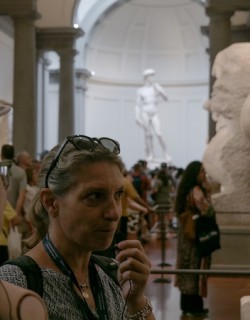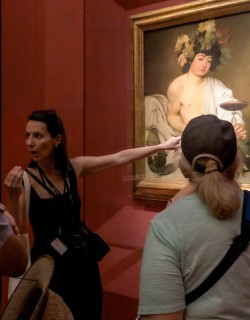There can be few sights that capture the alluring beauty of Florence better than the ramshackle Ponte Vecchio, its soft yellow facade and mighty brick piers gently illuminated under the soft light of the Tuscan sun and reflected in perfect mirror image in the glassy waters of the river Arno below. Fabulously picturesque and rich in history, the Ponte Vecchio is located right in the centre of the old city, linking the historic centre with the buzzing Oltrarno neighbourhood across the river.
Look north along the length of the iconic bridge and you’ll spy the unmistakable forms of the Duomo and tower of the Palazzo Vecchio rising up from the tangled thread of streets; the road south, meanwhile, will take you to the aristocratic splendours of the Pitti palace and the Boboli gardens.
As you make your way along the cobbled river crossing, past the jewellers and the goldsmiths, past the impossibly elegant Florentines going serenely about their daily business, past the tourists gawping in wonder at the city’s impossible beauty, just remember: you’re walking in the footsteps of history.
The stunning Ponte Vecchio is a must-see when visiting Florence. Discover all you need to know about this unique landmark with us!
The Ponte Vecchio is Florence’s oldest bridge
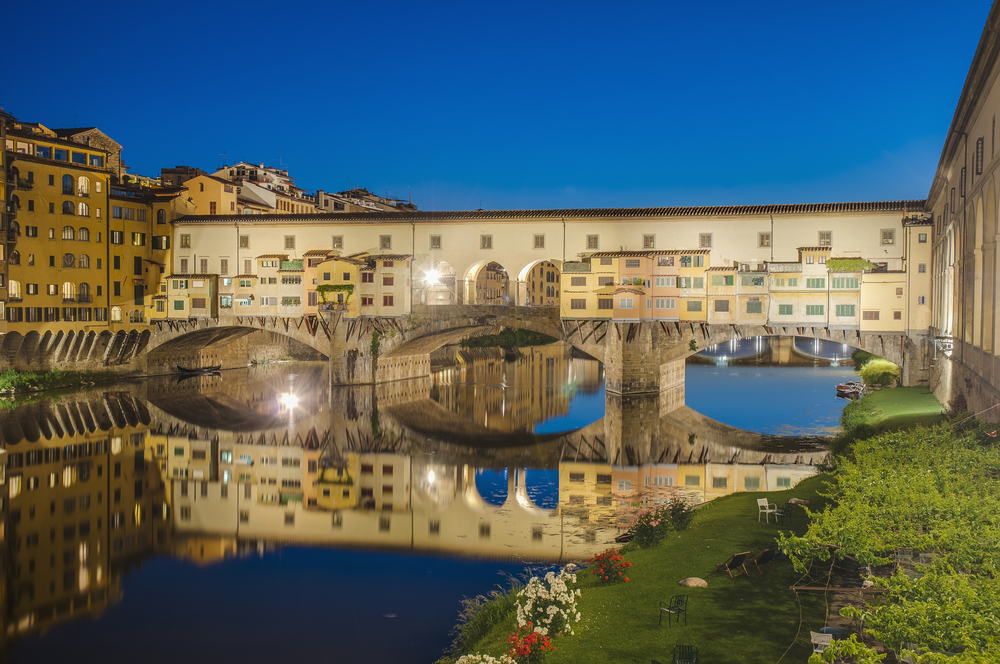
Ponte Vecchio means Old Bridge in Italian, and so it probably comes as no surprise that it's the oldest bridge in the city. As a natural fording point for the river Arno, a bridge probably existed on the site during the Roman era, although no material trace or documentary evidence has survived to confirm the hypothesis. The first verifiable record of a permanent bridge here dates from the 10th century, a somewhat rickety wooden structure that wasn’t destined to last too long…
But the current bridge dates from 1350
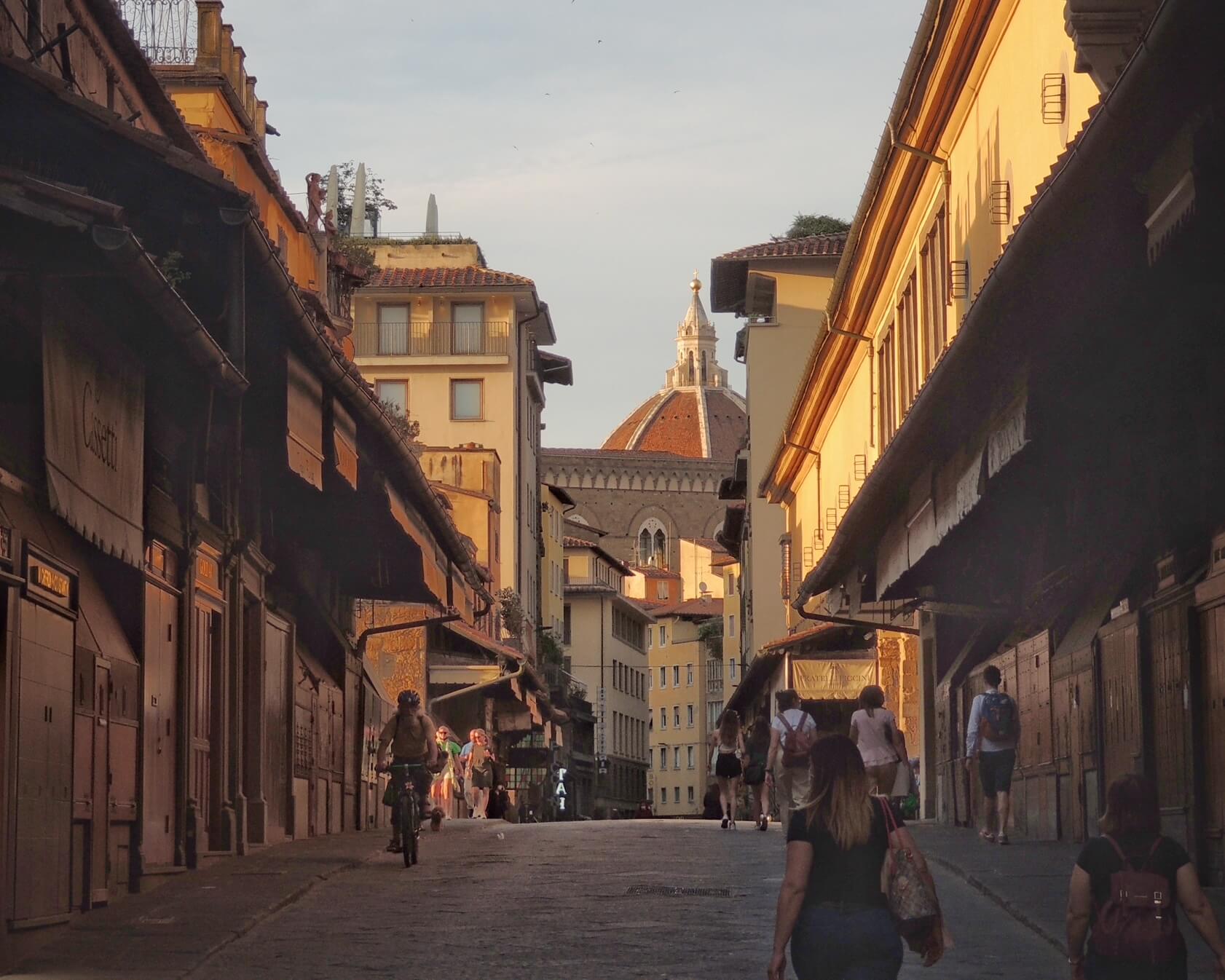
The first medieval bridge on the site of the current Ponte Vecchio was destroyed in a flood in the year 1117. It was soon rebuilt out of more durable stone, but this too was eventually washed away when the Arno burst its banks in 1333. A couple of the supporting stone piers survived, however, and were redeployed as part of the new building campaign that kickstarted in 1345 and was largely completed five years later.
The Renaissance Florentine art historian Giorgio Vasari asserts that the renowned painter and disciple of Giotto Taddeo Gaddi was responsible for the bridge’s design, although scholars have sometimes questioned his attribution, instead preferring the authorship of Neri di Fioravante or Dominican friar Giovanni da Campi, who rebuilt Santa Maria Novella in the wake of the flood.
Whoever was responsible for the design certainly knew what they were doing. The bridge is built on the basis of harmonic mathematical proportions, key to its enduring aesthetic appeal, and also deployed up-to-date engineering principles as well as durable materials to ensure its longevity. The distinctive segmented arches that carry the bridge above the Arno allow floodwaters and debris to easily pass by underneath, reducing pressure on the Ponte Vecchio. Four imposing towers, meanwhile, provided defensive capabilities to the structure.
Ponte Vecchio was once lined with butcher shops

For hundreds of years fish-sellers, butchers, and leather artisans plied their trade along the length of the bridge. With space often at a real premium in the densely populated urban centres of medieval Europe, it was a not uncommon sight to see merchants hawking their wares on river crossings - London Bridge was another prominent example. The shops were not allowed to monopolise the thoroughfare itself, and so the shops on the Ponte Vecchio were suspended over the Arno itself, held up by wooden supports.
The high costs of building the bridge incurred by the municipal council were also partially defrayed by renting out the spaces. By the middle of the 15th century the city’s Butchers’ guild had gained usage of much of the bridge’s commercial premises, a state of affairs actively encouraged by the city council on hygiene grounds - the site was perfectly adapted to the trade, as the ready supply of water and access to a watercourse (treated as an open sewer) was crucial to the bloody business of butchery.
Tanners and parchment makers operated alongside the butchers, competing with each other for the highest quality animal hides discarded by the meat sellers.
It seemed like a mutually beneficial solution, but when the perpetually cash-strapped city authorities were forced to sell off the sites half a century later things rapidly became more chaotic, and by the beginning of the 1500s the Ponte Vecchio had become one of the more rough and ready corners of the city - a dubious feast for the senses.
Until, that is…
A Medici decree relocated goldsmiths onto the bridge
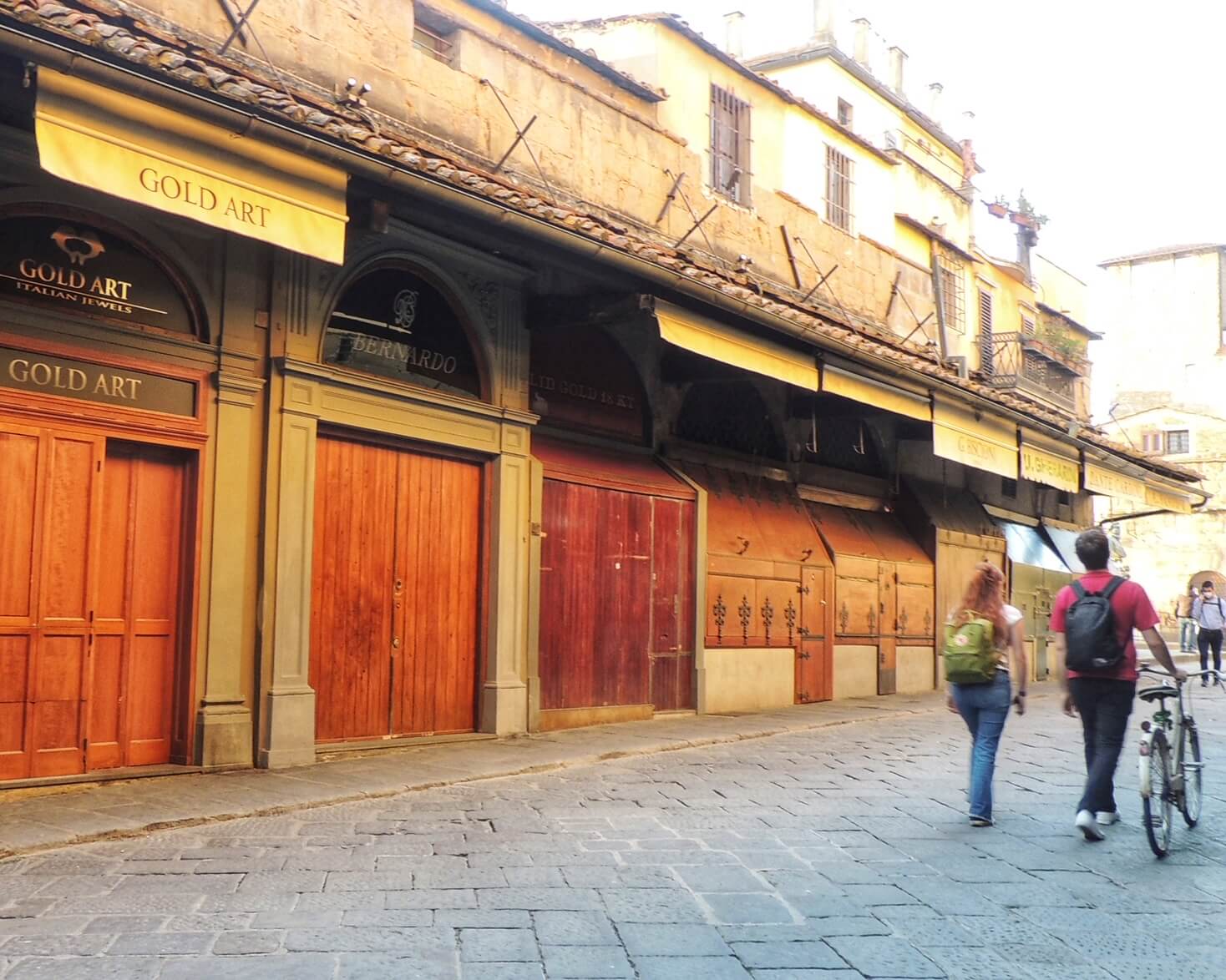
Crossing the Arno right in the heart of the old city, Ponte Vecchio was located very close to some of the most important buildings of both state and Florentine aristocracy, sites associated with the first family of the Florentine Renaissance, the Medici.
The bridge linked the principal Medici residence of the Palazzo Pitti to the government offices in the Uffizi and Palazzo Vecchio, and the foul smells created by the plebeian trades operating along the bridge eventually became too much to bear for the Medici Grand Duke Ferdinando I, who expelled the butchers and tanners in the 1590s.
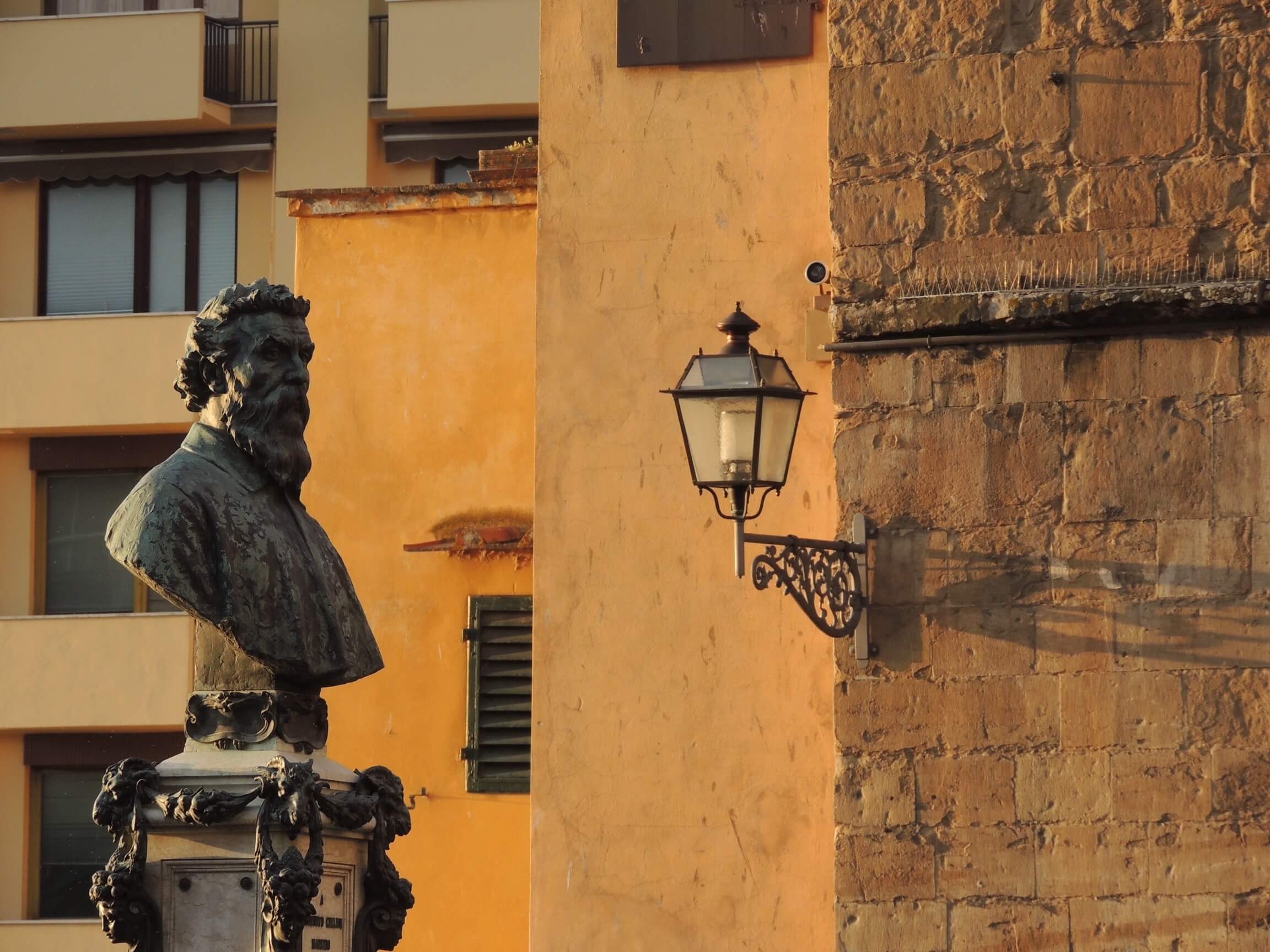
Seeking to elevate the tone of the Ponte Vecchio, the Grand Duke invited goldsmiths and jewellers to set up shop in the now vacant premises, and at a stroke the whole character of the bridge was transformed. It’s remained more or less like that to this day: the goldsmiths and jewellery shops are still here, 48 of them to be exact, selling their finery to the great and the good of the city as well as visitors from around the world.
As testament to the long affinity of the goldsmiths with the Ponte Vecchio, the bust of Benvenuto Cellini, renowned Renaissance artist, adventurer and goldsmith, looks out over the waters of the Arno from a prime position at the centre of the bridge.
Just think, if it wasn’t for the delicate olfactory sensibilities of the Medici Grand Duke, tourists on Ponte Vecchio today might be walking past legs of lamb and pig heads rather than windows of expensive jewellery on their journeys across the Arno!
The Renaissance Vasari corridor is built over the bridge
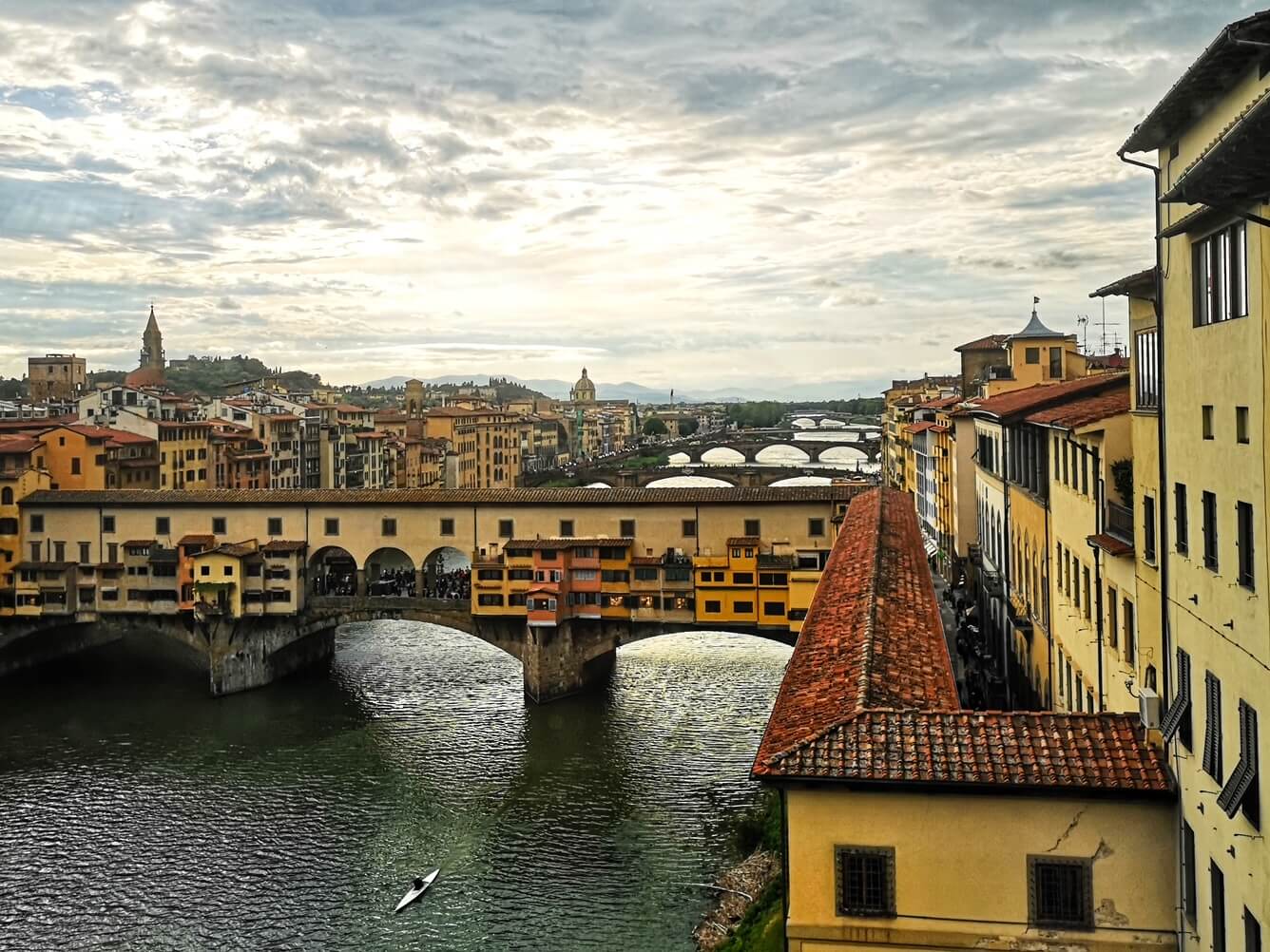
Clearing the boisterous butchers and their malodorous wares was just the final stage of the long-term Medici plan to improve their commute across the Arno. Crossing the always-crowded Ponte Vecchio was itself a hassle, and meant rubbing shoulders with citizens from all walks of life; and so Ferdinando’s father, Grand Duke Cosimo I, came up with an elaborate plan to bypass the bridge altogether.
On the occasion of the upcoming nuptials of his son Francesco Medici and Joanna of Austria in 1565, Cosimo hired renowned painter, architect and writer Giorgio Vasari (remember him?) to design a private covered walkway right over the top of the existing Ponte Vecchio that would allow the Duke and his family to move freely between the Pitti Palace and the Uffizi unencumbered.
Vasari didn’t limit himself to building a simple walkway, however: the Vasari corridor was designed in the latest architectural idiom, and doubled as an art gallery. Lining the airy space of the corridor were paintings and portrait busts of famous Florentines, amongst whose august company Cosimo no doubt considered himself.
The spectacular walkway extends for a kilometre in total, all the way from the west wing of the Uffizi gallery, over the Ponte Vecchio and onwards through the church of Santa Felicita and down into the Boboli gardens in the grounds of the Pitti palace. The corridor is home to thousands of precious artworks, and can be visited on appointment.
Ponte Vecchio was Florence’s only bridge to survive WWII unscathed
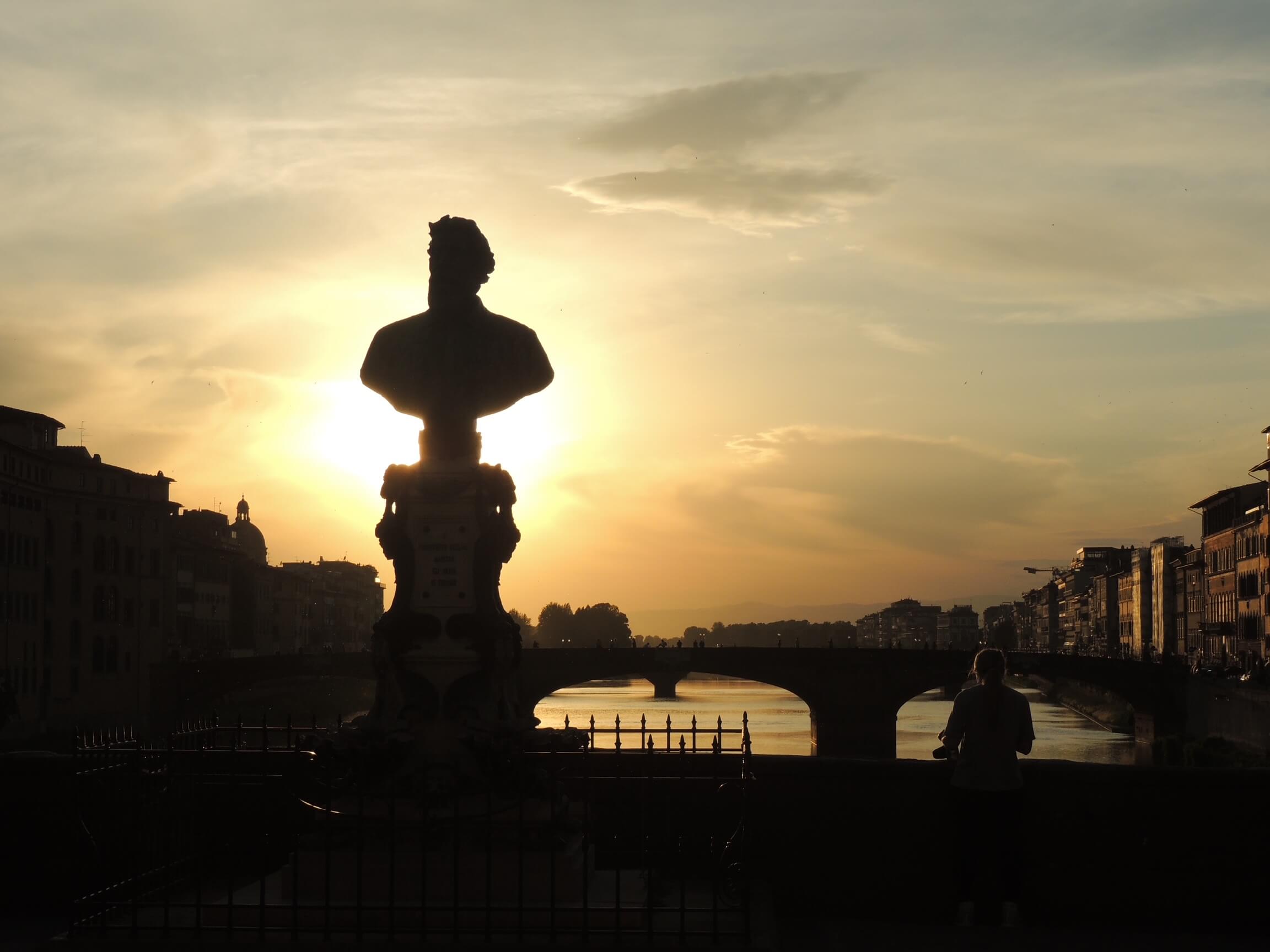
The venerable Ponte Vecchio was the only bridge to escape destruction during the Nazi retreat from Florence in 1944. Legend has it that the Fuhrer himself ordered the bridge’s salvation, considering it too beautiful to destroy.
There is some truth to the story - Hitler was smitten with the charms of the city, and before his State Visit to Florence in 1938 his Fascist ally Benito Mussolini had the central windows of the medieval bridge enlarged so that the Fuhrer could enjoy a better view of the Arno. It seems that the survival of the Ponte Vecchio in 1944 owes more to German diplomat Gerhard Wolf, however, who counselled the Nazi high command not to lay waste to the bridges of Florence.
Wolf’s pleas evidently didn’t fall on deaf ears; on the night of August 3rd, as Allied troops neared the city, all of the Arno’s crossings in Florence were blown sky high in what was known as Operation Feuerzauber - all except the Ponte Vecchio, where a small plaque commemorates Wolf’s humanity amidst the barbarities of the city’s wartime occupation.
The bridge was damaged in a devastating flood in 1966
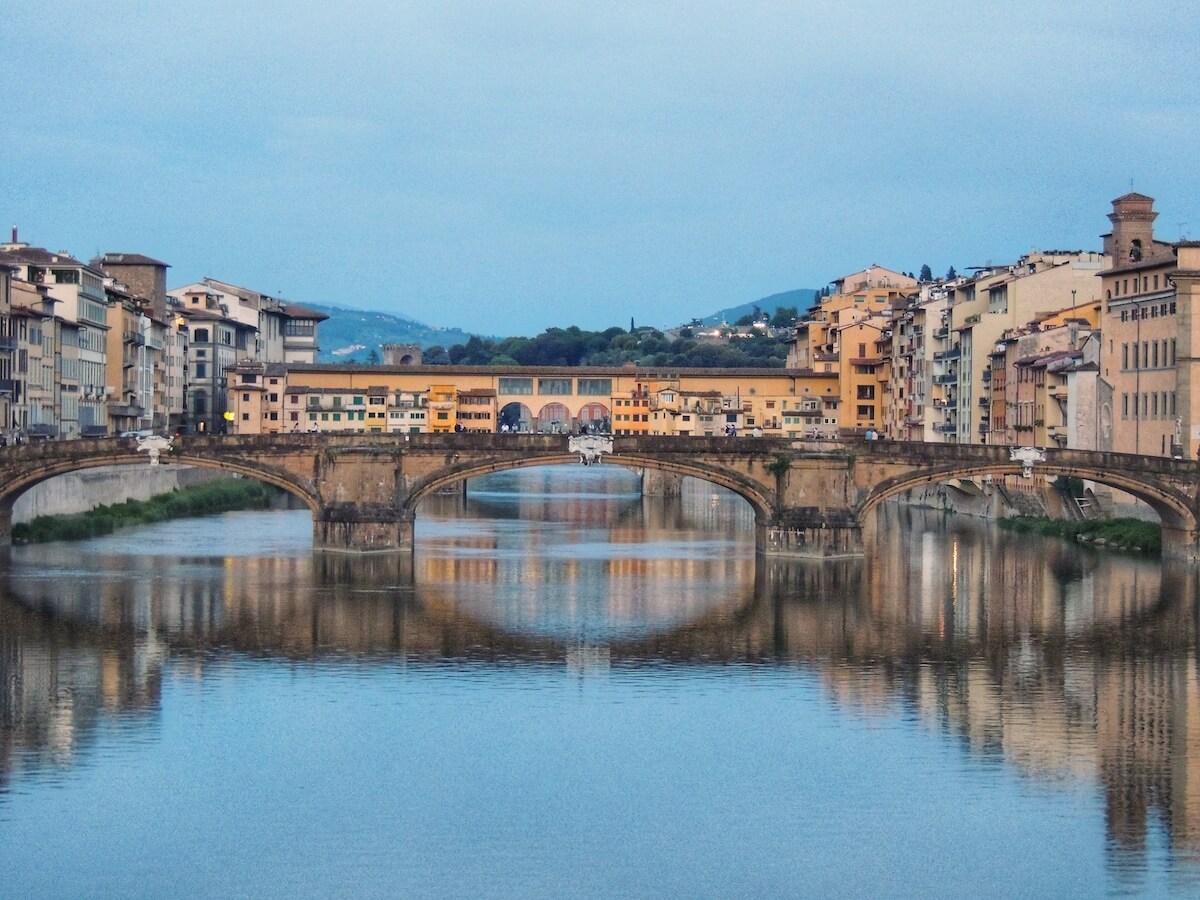
On 4th November 1966 Florence suffered the worst flood in its history since 1557. Consistently heavy rains overwhelmed the rivers and dams leading to the city, and resulting floodwaters from the Arno reached levels almost 20 feet higher than normal. The result was widespread loss of life, with more than 100 casualties, and severe damage to many of the city’s most beautiful historic buildings.
Many priceless artefacts and artworks were destroyed or damaged, and it took the painstaking conservation efforts of volunteers known as the angeli del fango, or mud angels, to restore them over the coming decades.
The Ponte Vecchio bore the full brunt of the swollen Arno’s fury; although the venerable medieval bridge’s ingenious architecture, with its stone arches that helped disperse the massive water pressure, ensured that the Ponte Vecchio remained structurally sound, trees that had been swept up in the floodwaters smashed into the bridge and wrecked the shops lining its sides. Residents recall seeing valuable furniture floating down the river in the aftermath.
A stricken petrol tanker caused even worse damage, breaking through the bridge’s central section. Ironically, this contributed to the Ponte Vecchio’s salvation as it provided another outlet for the water to pass through. Thankfully the Ponte Vecchio remained standing, it’s unique beauty preserved for generations to come.
See the Ponte Vecchio on our A Day in Florence tour, where we explore all the must-see highlights and hidden gems of the city - in our opinion it's the best way to see what Florence is all about!


